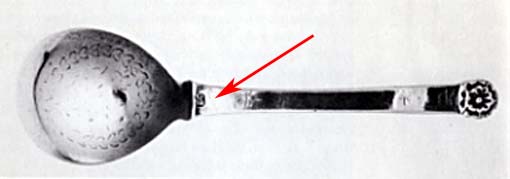







Thank you very much! I assumed the spoon to be christening gift and was surprised at the many first names. So the letters are the names of the couple, very interesting!Sasropakis wrote:Based on the owners' initials it could be Scandinavian. The initials/names seem to include patronymics which were typical in Scandinavia. For example it could be something like Valdemar PettersSon Lund and Maria DanielsDotter in Swedish.
I am thrilled and astonished. I knew this forum is fantastic, but I did not think it was possible to find (even a possible) "GN". Here in Austria the documentation about silversmiths before 1780 is very incomplete. Now this spoon is way older and does not even bear a town mark. I am very impressed! Thank you for searching!Qrt.S wrote:Yes it could be Scandinavian. After an intensive search I have found one possible master punching GN. He is Gjert Jørgensen Niemand in Skien in Norway, born in December 1632, master 1660 and dead in January 1679. Is it a match or not, I don't know. Anybody has a better solution?
It does not look soldered, but "hammered and filed". I am no expert in manufacturing techniques, maybe this image helps.AG2012 wrote:Hi, Very unusual form for a 17th century spoon (the neck). Is the bowl soldered to the handle ? Regards


